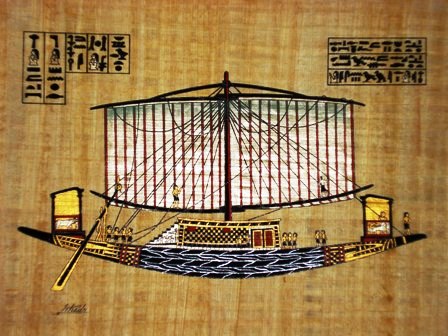
(- if not rowed sidewards)Īngling or deflecting the oar or oars out of centerline. Twisting work in same way as a rudder hinged on the fore edge of the blade - it act on the streamning water - and thus only when sailing.

Twist it around the longitudinal axis - just as his Viking ancestors did on their speedy boats. Twisting the oar, as Thor Heyerdahl did on Ra and Ra2 reed boats. The dipping oar blade is of course able to make a static turn. With wind across the pointed course and the oar well sustained against the lee side of the craft, a dipping oar/board become a part of the undervaterhull and can changes the CLR = 'Center of Lateral hydraulic Resistance' in a way as balance the leeway of aft versus that of fore end. That means: that could be or that could be not, but is now impossible to verify, because in acordance with Heyerdahl's Norse tradition, Tigris is pyred, the jar disappeared and Heyerdahl dead.Ī steer-oar can work in more ways: Dipping the oar blade as Dirch showed us at Carnon river: Ref: dipping blade 1 Ref: dipping blade 2 If Tigris was equipped with a centerboard /daggerboard /Guara /Vara the Kon-tiki museum today doesn't know. The reference to an jar is uncertain, but the use of Daggerboards (Guaras) on Tigris was confirmed in a personal interview (april 12, 2019) with the reed boat builder Demetrio Limachi of Titicaca: two daggerboards /Guaras on each side of bow. J.P.Capelotti: Norman Baker, personal interview, July 8, 2000). Heyerdahl's captain Norman Baker tells, in a many years later interview, that Tigris "was fitted with a centerboard, as Thor had seen on the jar in british museum" (Ref. Daggerboards in front end are used to move the CLR ahead, as we need, when we are sailing with wind abeam and beating against the wind. Whether he had or not had daggerboards on the side of bow is outside our interest - but I don't think daggerboards in front-end would be meaningful to use running for the wind over the Atlantic Ocean - on the contrary. With that constallation he had obtained control over the CE/CLR relation and could run for the wind and at least sail broad reach. Thor Heyerdahl sailed mainly his RA boats downwind when crossing the ocean, and his reed boat was perfectly prepared for wind astern.Īs the RA2-photo show, the mast (and with that the wind-center CE) was cleverly placed relative ahead, and with two steeroars plunged down aft, he had he had moved back the CLR. On his RA boats, Heyerdahl could only twisted his steer oar - but nevermind - who knows - on Kon-tiki Heyerdahl too discovered his Guara-steering under his raid. What is important here is, that the system of double steer-oar looks like the oldtimers from Egypt - apart form the fact, that the steer-oars at RA2 ware mounted with tillers as we can't see on the old paintings. I have no idea if the reed boats of Thor Heyerdahl were a copy of something.Įven if the master model for his reed boat is told to come from the Upper Nile of Sudan - it looks more like an expandet Titicaca reed-raft original from South America. The originality of this RA2 photo with Guaras is verified by the signs of 8 crew members.

We must say, that it perhaps isn't important, what Thor Heyerdahl did, nor how he learned - the important is what the oldtimers did! But a photo is a photo, as is showing the things as they really ware at that moment, and not as they should be or could be. The observation of the Guaras on RA2 as start-equipment, the very same Kon-tiki museum neither knew nor had been aware, even having the old RA2 in keeping. Those too disappeared later of same reason as the mizzen from Kon-tiki - not useful for downwind sailing.īoth the RA boats ware equipped with fixed mounted steer-oars aft, as give the needed hold back by downwind but even if those looked like the Egyptians, the RA steer-oars only could work twisting as a rudder and not by dipping - nor was it fastened to tilt up, if digging into a shallow muddy river bottom.Ī shallow muddy river bottom was more an actual risk for the later Tigris, as sailed on rivers, but nobody today knows how Tigris was equipped - she is pyred.

RA2 shows up with two sidemounted Guaras in port bow. Such a sail is not useful for downwind sailing, and perhaps therefore it disappeared later. We observe that Kon-tiki still had a mizzensail. Thor Heyerdahl was a researcher and investigator - and most of all an inspirator - and on his way he probably has tried many things - and learned.Īmong the above 4 photos, specially two photos call our attention.


 0 kommentar(er)
0 kommentar(er)
